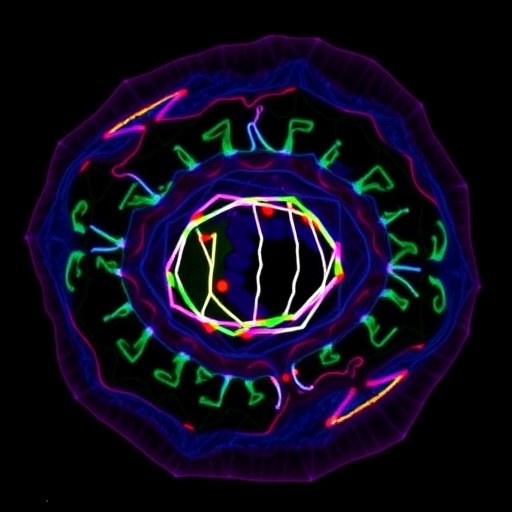One of only four medical institutions participating in this groundbreaking Phase II clinical trial

Credit: University Hospitals Cleveland Medical Center
CLEVELAND– University Hospitals (UH) Seidman Cancer Center treated its first patient in a new clinical trial to validate the groundbreaking effects of the poliovirus on glioblastoma (GBM), a deadly Grade IV cancer of the brain.
UH is the only Midwest site participating in this clinical trial, which was initiated at Duke Cancer Institute in Durham, NC. The original study, which ran from 2012-2017, was published in New England Journal of Medicine in July 2018 as well as highlighted on “60 Minutes” in 2015 and again in 2018. The study found that survival rates were significantly higher in glioblastoma patients who received an intratumoral infusion of a modified viral chimera combining the polio and rhinoviruses (PVSRIPO immunotherapy) compared to patients receiving standard treatment at the same institution.
“We are proud that University Hospitals was selected as one of a handful of top brain tumor centers such as the Massachusetts General Hospital and UCSF to participated in this Phase II clinical trial based on our expertise in immunotherapy and reputation for treating brain tumors,” said Andrew E. Sloan, MD, FAANS, FACS, Director of the Brain Tumor and Neuro-Oncology Center and the Center of Excellence in Translational Neuro-Oncology at UH Seidman Cancer Center and the UH Neurological Institute. “We want to offer this treatment opportunity to patients with recurrent glioblastomas who want to pursue groundbreaking alternatives that may improve their chances of survival from the most challenging of brain cancers.”
The 59-year-old man first enrolled in this trial suffered from glioblastoma that recurred after initial surgery and treatment. Following a biopsy to verify the progression of the brain tumor, Dr. Sloan placed a catheter into the tumor and the modified attenuated poliovirus was convected through the catheter into the tumor the next morning. Through this process, known as convection enhanced delivery (CED) and performed in the NeuroIntensive Care Unit at UH Cleveland Medical Center, the poliovirus attacks the tumor creating an anti-tumor immune response. The patient went home the next day.
“This trial uses a polio virus modified to specifically target a receptor (CD155) found only on tumor cells,” Dr. Sloan said. “While it only kills a small number of tumor cells directly, the virus and the immune response it exerts exposes these tumor cells, which have been hiding from the immune system and creates a significant anti-tumor immune response that takes over and kills the rest of the tumor that the virus has not destroyed. Unlike the native polio virus, the modified virus does not attack neurons.”
Traditionally, survival from a GBM is less than a year, and patients typically live less than six months after recurrence. The survival rate among those receiving PVSRIPO immunotherapy was 21 percent at 24 and 36 months, much higher than the 4 percent survival rate among historical controls treated at Duke, according to the article published in the New England Journal of Medicine on July 12, 2018.
Researchers at Duke first discovered that the poliovirus delivered directly into intracranial tumors was able to trigger a positive immune reaction, which led to a longer survival rate from the notoriously difficult-to-treat cancer. In Phase I of the clinical trial, doctors determined the correct dose of the virus to administer while mitigating side effects. In Phase II, researchers will compare outcomes in patients.
“The body has an amazing immunological memory,” Dr. Sloan said. “If you’ve received the polio vaccine as a child, your immune system remembers that polio is a bad thing. The injection of the polio virus jump-starts the immune response, which in turn attacks the cancer.”
###
For more information about this clinical trial, go to:
https:/
About University Hospitals / Cleveland, Ohio
Founded in 1866, University Hospitals serves the needs of patients through an integrated network of 18 hospitals, more than 50 health centers and outpatient facilities, and 200 physician offices in 16 counties throughout northern Ohio. The system’s flagship academic medical center, University Hospitals Cleveland Medical Center, located in Cleveland’s University Circle, is affiliated with Case Western Reserve University School of Medicine. The main campus also includes University Hospitals Rainbow Babies & Children’s Hospital, ranked among the top children’s hospitals in the nation; University Hospitals MacDonald Women’s Hospital, Ohio’s only hospital for women; University Hospitals Harrington Heart & Vascular Institute, a high-volume national referral center for complex cardiovascular procedures; and University Hospitals Seidman Cancer Center, part of the NCI-designated Case Comprehensive Cancer Center. UH is home to some of the most prestigious clinical and research programs in the nation, including cancer, pediatrics, women’s health, orthopedics, radiology, neuroscience, cardiology and cardiovascular surgery, digestive health, transplantation and urology. UH Cleveland Medical Center is perennially among the highest performers in national ranking surveys, including “America’s Best Hospitals” from U.S. News & World Report. UH is also home to Harrington Discovery Institute at University Hospitals – part of The Harrington Project for Discovery & Development. UH is one of the largest employers in Northeast Ohio with 28,000 physicians and employees.
Advancing the Science of Health and the Art of Compassion is UH’s vision for benefitting its patients into the future, and the organization’s unwavering mission is To Heal. To Teach. To Discover. Follow UH on LinkedIn, Facebook @UniversityHospitals and Twitter @UHhospitals. For more information, visit UHhospitals.org.
Media Contact
Jeannine Denholm
[email protected]
216-844-2555




